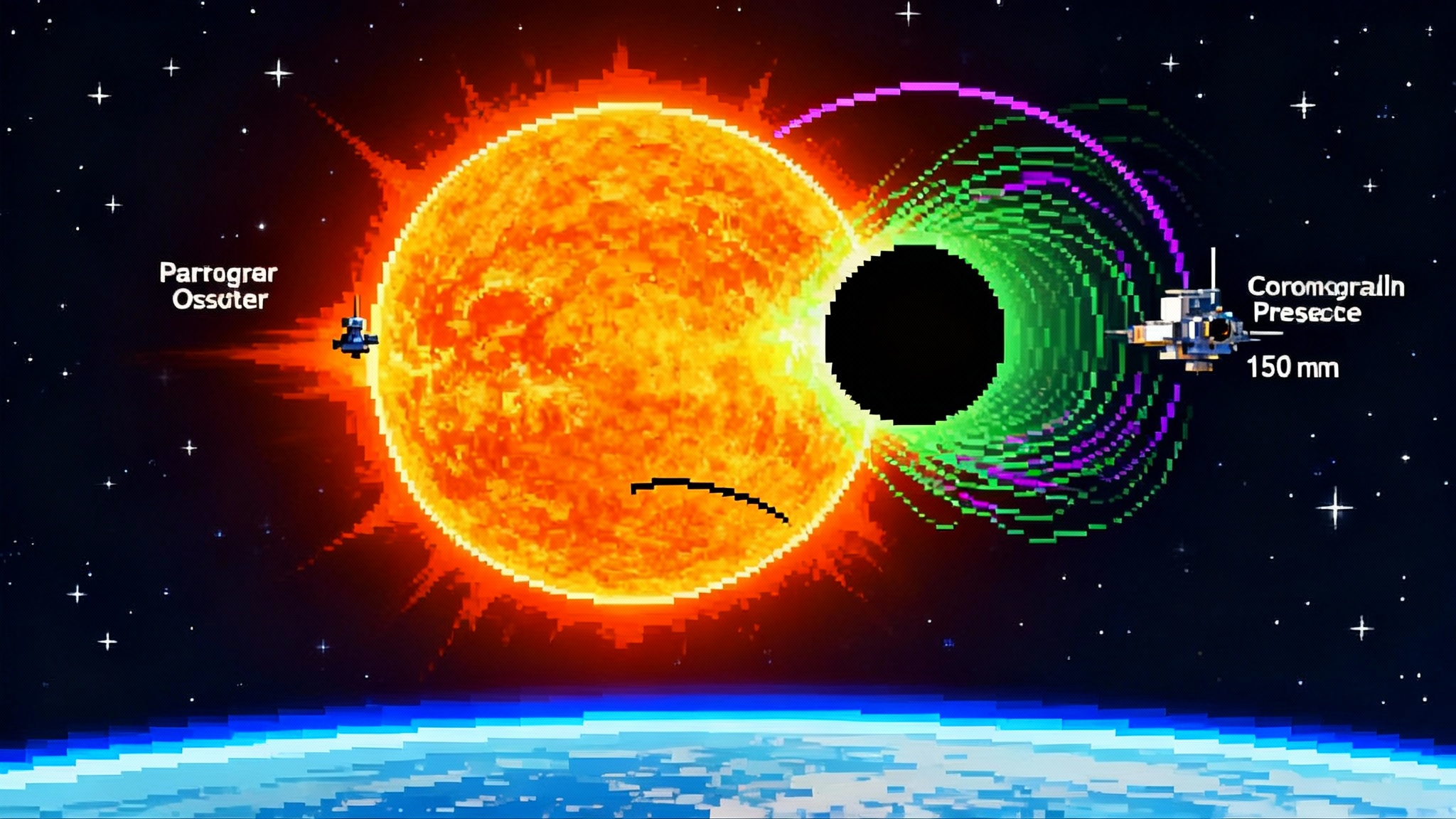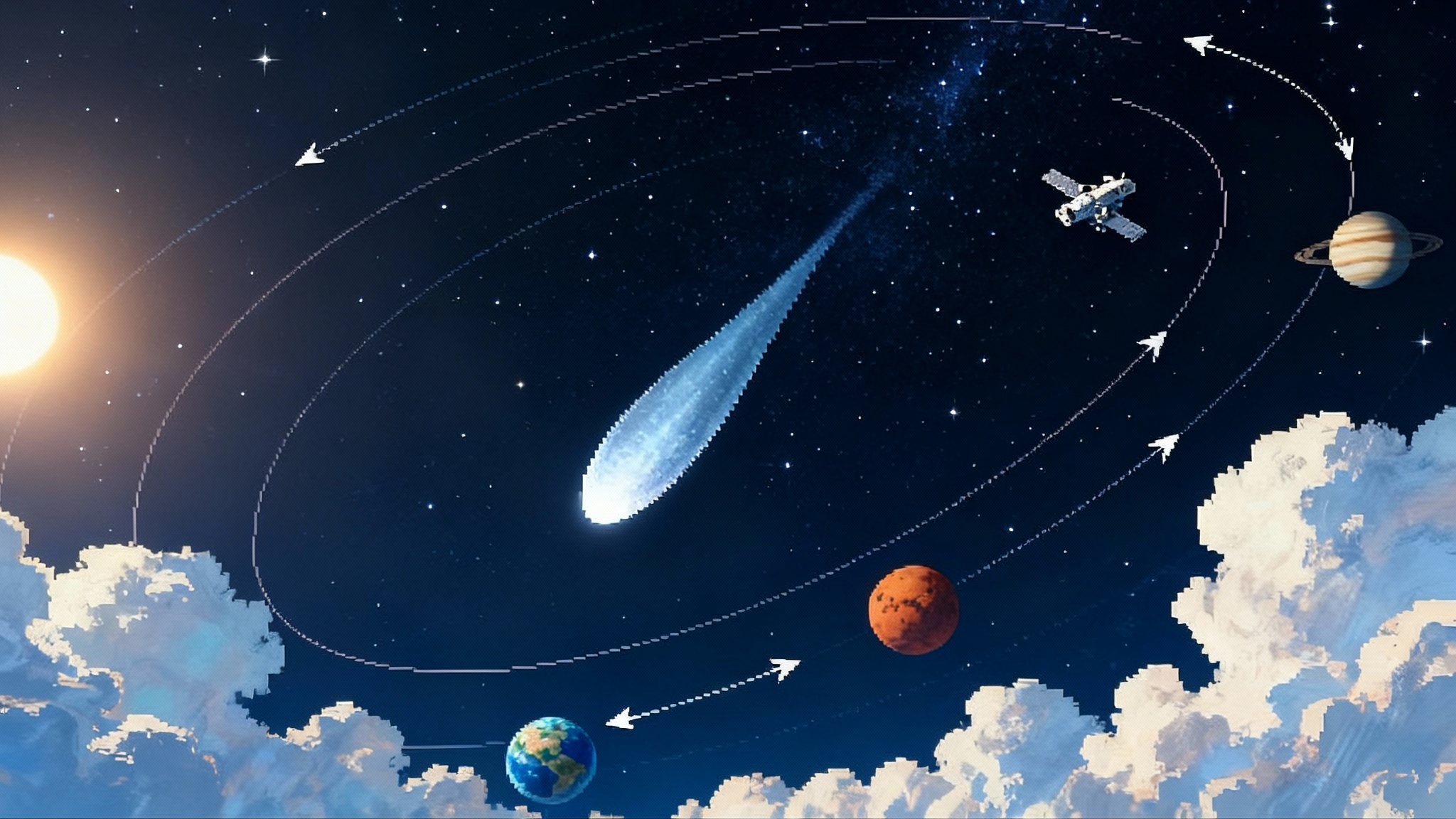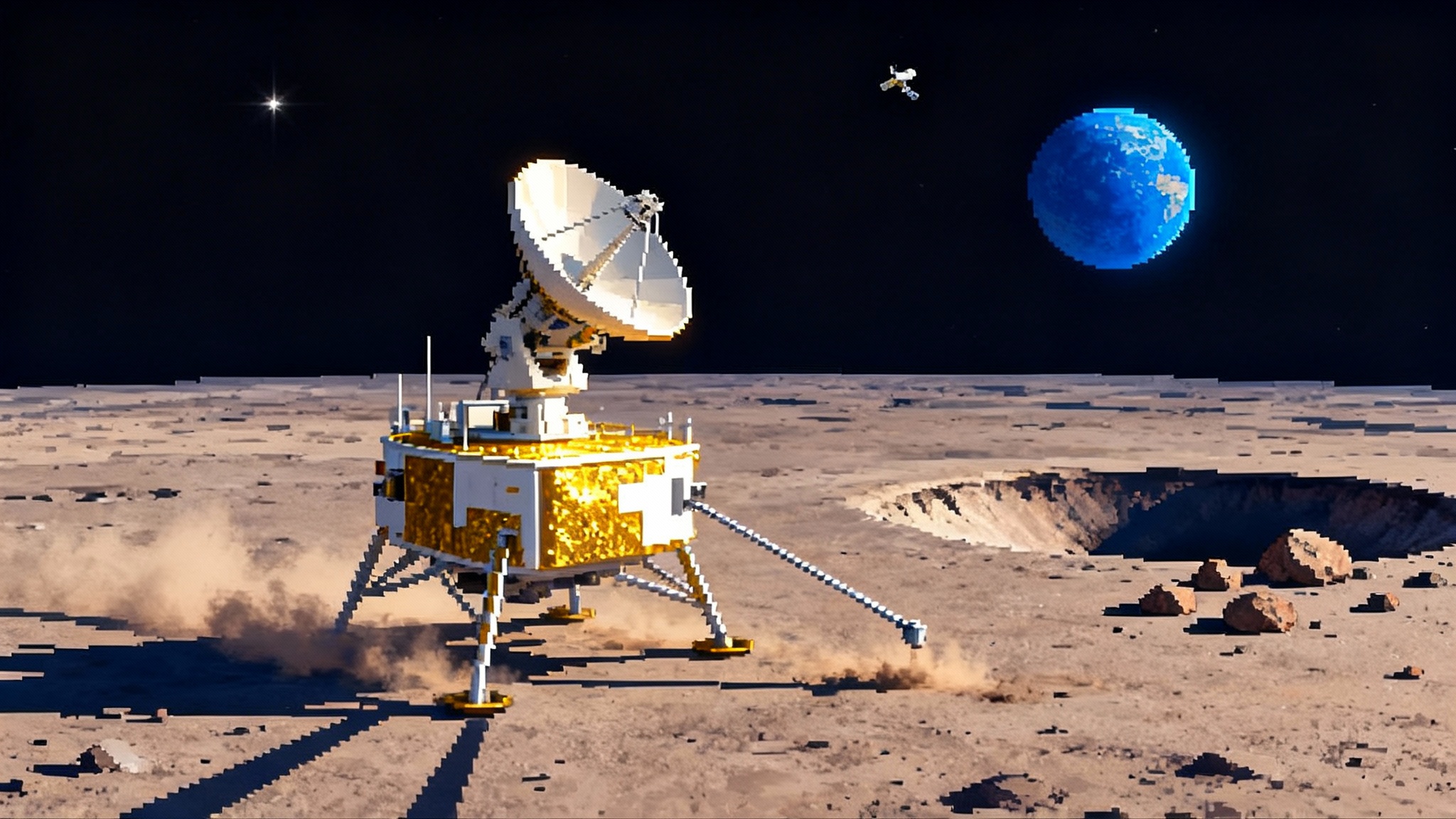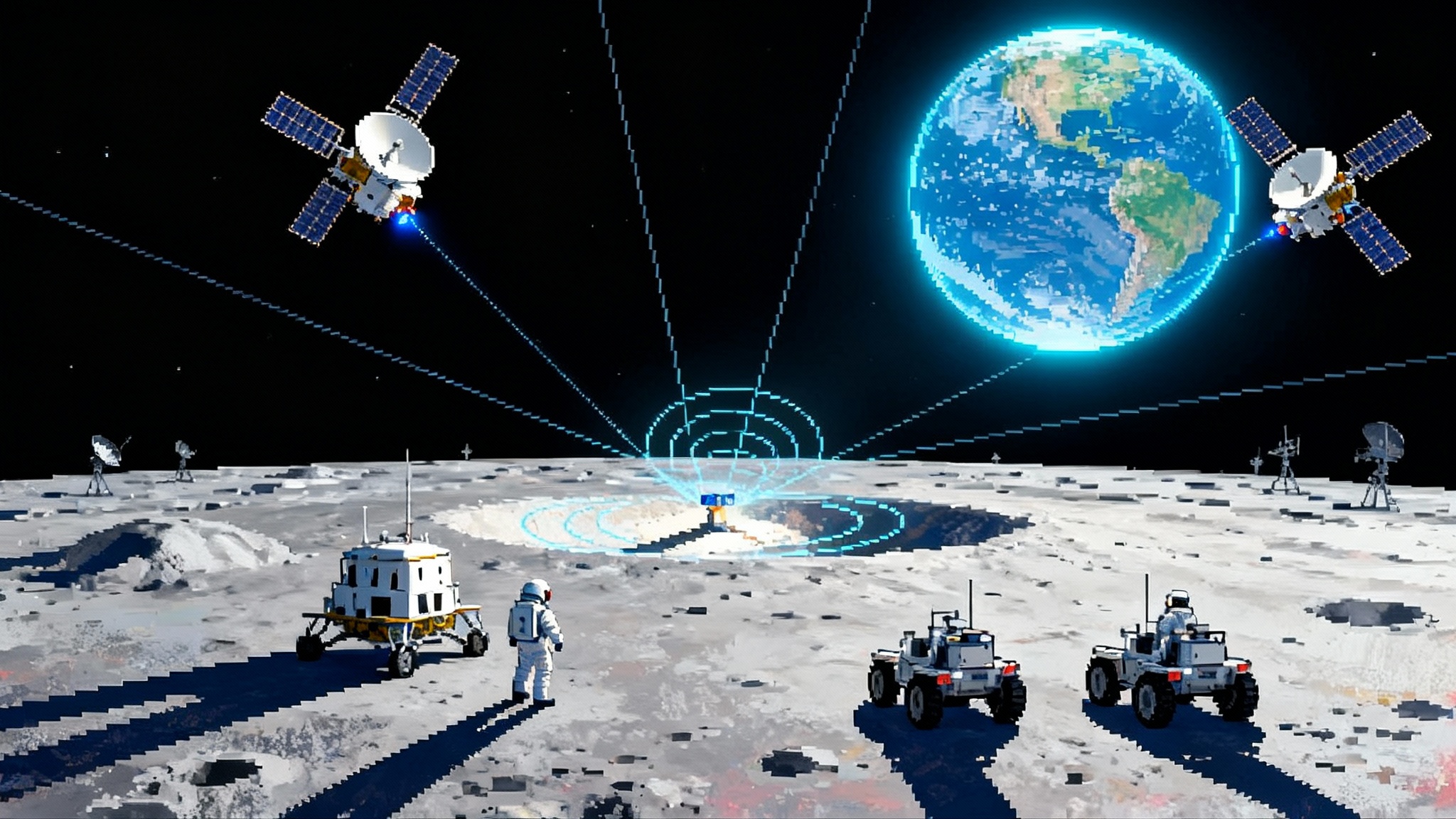New Glenn's Mars Debut Redraws Planetary Mission Math
Blue Origin’s New Glenn launched NASA’s twin ESCAPADE probes on November 13, 2025, then nailed its first booster landing. The flight opens commercial rideshares to Mars, resetting budgets, teams, and timelines for planetary science.
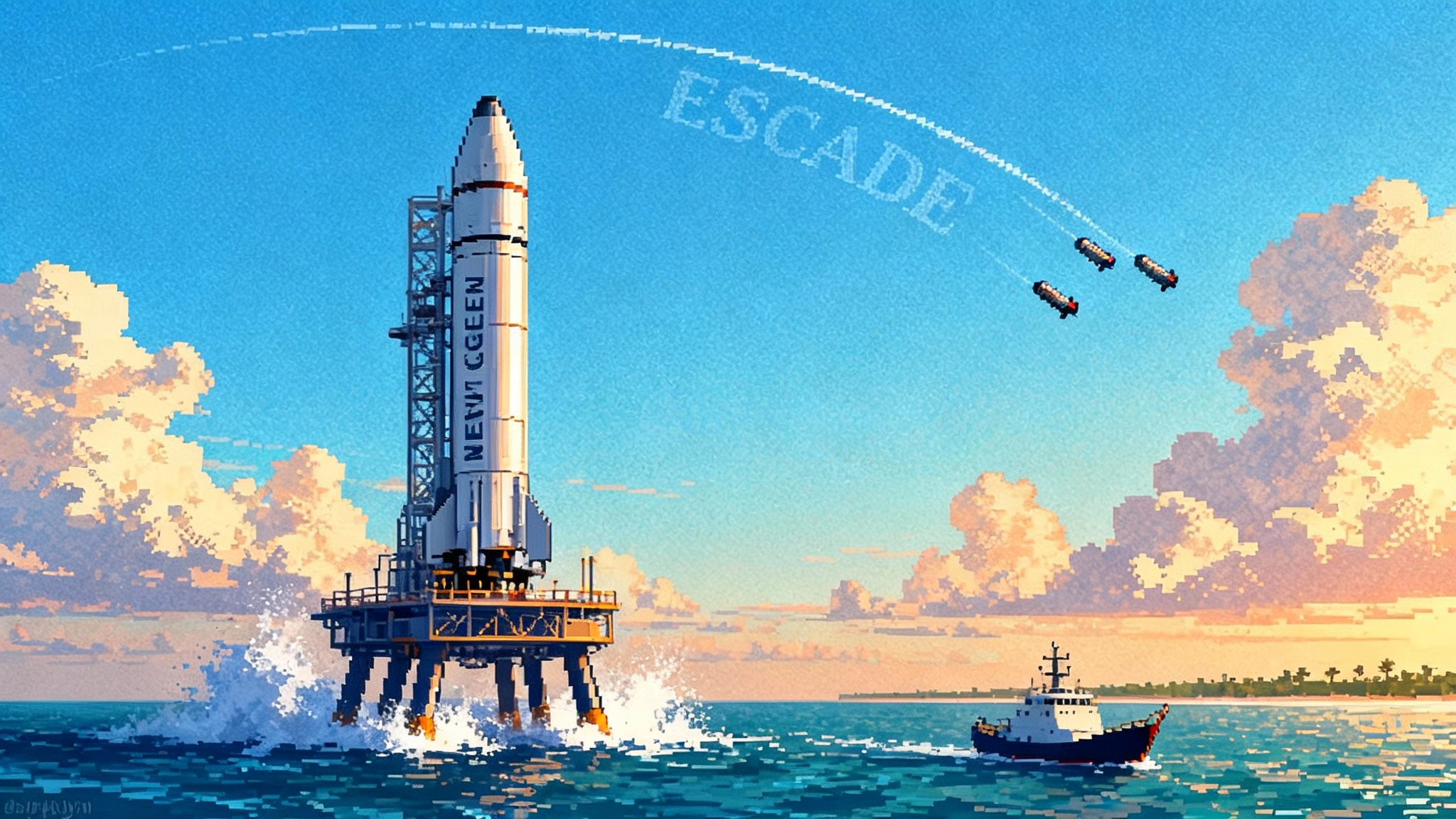
A rocket lands, a new market lifts off
On November 13, 2025, Blue Origin’s New Glenn lifted NASA’s twin ESCAPADE probes toward Mars and brought its first stage home on the sea platform Jacklyn. It was the company’s first booster recovery and the rocket’s first interplanetary payload. The combination matters far beyond a highlight reel. A heavy reusable launcher just demonstrated that it can start journeys beyond Earth orbit while preserving hardware for the next flight. That is the recipe for cadence and cost compression. The milestone was widely reported, including a detailed Reuters dispatch on the launch and landing.
ESCAPADE, built by Rocket Lab for NASA and led scientifically by the University of California, Berkeley, is a small but sophisticated twin mission that will study how the solar wind interacts with Mars. For broader context on space‑weather infrastructure, see our look at the IMAP early warning stack at L1. The pair will not sprint straight to the Red Planet. Instead, they will loiter near Earth and depart when the geometry is right, an approach that decouples spacecraft readiness from a narrow interplanetary window.
Why this is an inflection point
Reusable rockets already rewrote the economics of getting to low Earth orbit. Beyond Earth orbit is where planetary missions live, and historically that world depended on a small set of expensive launchers, tight windows that open roughly every 26 months, and all‑or‑nothing schedules. One scrub could push a mission by years. Project managers overbuilt schedules and budgets because a missed date had catastrophic knock‑on costs.
New Glenn’s flight introduces two levers that shift that logic:
- Reuse at heavy‑lift scale: Recovering the first stage after sending a payload on an interplanetary path demonstrates that reusability and higher energy missions can coexist. That is what enables frequent attempts rather than single shots.
- Loiter strategies: ESCAPADE launches when the rocket is ready, waits in an energy‑efficient parking orbit, and departs for Mars on a later date. In practice, this smooths demand and allows shared rides for different missions queued for similar paths.
Think of it like container shipping. Instead of chartering an entire ship for a single factory’s goods on the one day the canal is clear, a port runs a regular convoy. Containers arrive as they are built, get stacked in a massive hold, then the convoy leaves on time. Missed a truck by a day, you catch the next one.
How the new rideshare works, in plain terms
NASA describes ESCAPADE’s path as an Earth‑proximity loiter that takes advantage of orbital mechanics. The spacecraft enter a distant parking regime, even sampling Earth’s magnetotail, then depart when Earth and Mars align, with arrival targeted for September 2027. This method increases launch opportunities and reduces the penalty for weather or solar‑activity delays. NASA confirmed the 3:55 p.m. Eastern launch time and the loiter strategy in its NASA mission release on ESCAPADE.
What changed is not only trajectory math but who coordinates the orchestra. In the old model, a single flagship owned the rocket, the window, and the attention of a large ground team. In the new model, a commercial provider can sell Mars‑capable slots on a large fairing and add an orbital tug or use spacecraft propulsion to set the final course. The seven‑meter fairing on New Glenn is not just a number. It is a warehouse floor for multi‑manifesting. That space simplifies integration, allows larger aeroshells or multiple small spacecraft to ride together, and reduces mechanical compromises that add risk.
Budgets, teams, timelines: what actually gets cheaper
Most readers have seen a headline that a mission cost under 80 million dollars and wondered where the savings come from. Here is the short list:
- Schedule resilience cuts rework. If a scrub no longer punts you two years, you do not spin engineering teams for months keeping a partially fueled spacecraft alive on the pad. Teams go home, fix the real issue, and try again within days.
- Fixed‑price launch contracts drive discipline. NASA’s Venture‑class Acquisition of Dedicated and Rideshare model puts more responsibility on providers while setting expectations on risk that are appropriate for small planetary missions. That makes costs more predictable for principal investigators.
- Standard interfaces replace bespoke tailoring. When a launcher advertises repeatable accommodations for small interplanetary payloads, spacecraft designers reuse avionics, fuel systems, and software stacks. The result is fewer one‑off exceptions that trigger cost growth.
- Volume equals simplicity. A larger fairing reduces the need for origami‑like deployment mechanisms. Simpler deployment means fewer failure modes and shorter test campaigns.
The organizational effects are just as important. Smaller flight teams can move faster because the integration path is clearer, and they can plan around regular launch attempts instead of structuring an entire lab around a single biannual shot.
Competitive pressure on the launch market
For a decade, SpaceX’s Falcon 9 has been the default for most rideshares and many science missions. Falcon Heavy has handled some high energy jobs. New Glenn’s entry does not erase that lead, but it reshapes the market in two ways:
- Capacity and cadence: Two heavy reusable families competing for interplanetary slots means more opportunities per year and better bargaining power for payload owners. Even when prices remain confidential, the presence of a credible alternative is leverage.
- Volume for co‑manifesting: A seven‑meter fairing changes the rideshare math. Rockets with more headroom can pack multiple small orbiters and add a tug. That allows mission designers to split risk across several probes rather than one complex spacecraft.
United Launch Alliance’s Vulcan, Rocket Lab’s coming Neutron, and a set of space‑tug providers are also in the mix. The practical outcome is that planetary science will increasingly book transportation the way commercial constellations do: choose a window, select a configuration, and reserve a spot rather than building a one‑off plan around a single rocket and a single day. For how another heavy‑lift player may shift deep‑space cadence, see Starship’s 2025 pivot on refueling.
What becomes viable in the next 3 to 5 years
Here are mission classes that move from proposal decks to realistic flight campaigns.
- Smallsat orbiters for atmosphere and space‑weather physics
- What: 150 to 300 kilogram probes with ion and electron analyzers, magnetometers, and radiation monitors.
- Why viable now: Regular Mars rideshare and loitering trajectories let you launch when you are ready, then phase in a convoy toward the planet. The fairing volume supports multiple copies for stereo or triad measurements.
- Payoff: Time‑resolved three‑dimensional maps of how the solar wind strips atmosphere during different solar cycles.
- Cubesat constellations as real science instruments
- What: 6U to 27U clusters that fly in loose formation to sample different altitudes or local times around Mars.
- Why viable now: Cheap access, standard dispensers, and commercial radios that have already flown in deep space. Add one hosted propulsion kit and you can change local time or altitude without wasting the whole platform.
- Payoff: Statistical coverage that a single orbiter never achieves, like dust storm onset mapped simultaneously at multiple longitudes.
- Piggyback sample scouts
- What: Tiny entries packaged with a co‑manifested orbiter. Think shoebox aeroshells with a few grams of dust capture media or surface sniffers that test thermal protection and entry sensors.
- Why viable now: The big fairing allows multiple aeroshells under a shared shroud. The orbiter provides cruise communications and navigation.
- Payoff: Retire risk for future sample return elements, validate new heat shield materials, gather localized dust chemistry before a larger lander commits.
- Phobos and Deimos opportunists
- What: Smallsats that peel off to fly by or loiter near the Martian moons.
- Why viable now: With more rides and loitering options, a rideshare can release a probe on a slightly different energy path to hit a moon encounter without a dedicated rocket.
- Payoff: Joint mapping of regolith cohesion and volatiles to inform future resource use and anchoring techniques.
- Relay and navigation tech demos
- What: Compact communications relays with steerable antennas and weak‑signal GPS‑like experiments for Mars orbit.
- Why viable now: Planetary missions need modern networking. A recurring rideshare can seed a basic relay backbone that later flights use, which increases science return for everyone.
- Payoff: Higher data rates and more flexible passes for every orbiter and lander that follows.
- Risk‑buydown entrants for crewed exploration
- What: Radiation dosimeters, space weather sentinels, and ionospheric sounders.
- Why viable now: Cheap slots allow iterative deployment that tracks the solar cycle, instead of single snapshots.
- Payoff: Better models for astronaut exposure and communications blackouts.
The mechanics behind faster, cheaper missions
Several engineering and operations details make the above list practical rather than optimistic:
- Loitering cuts propellant margins. By staging near a Lagrange point or a distant Earth orbit, missions can top off at the start, then depart without the time pressure of a single window.
- Thermal and contamination simplicity. A roomy fairing allows cleaner thermal blankets and fewer compromises on vent paths. Small changes here remove entire weeks of test time.
- Integrated rideshare services. Expect providers to bundle trajectory design, separation analysis, and deep space communication planning as a package. What large constellations take for granted in low Earth orbit is beginning to arrive for planetary rideshares.
The limiters and how to manage them
There are real constraints that teams must respect:
- Deep space communications time is scarce. Even with the Deep Space Network expanding, time on big dishes is precious. Action: book downlink allocations early and incorporate commercial dishes for cruise phases. Include optical downlink demos only if they replace RF time, not add to it.
- Coordination risk in multi‑manifest stacks. One payload’s late glitch can delay others. Action: require shared interface simulators and a common test calendar, and penalize late changes with contractual fees to keep the stack on schedule.
- Planetary protection. Splitting a mission across many small bodies complicates sterilization. Action: standardize bioburden procedures for rideshare payloads to a single acceptable library, then certify vendors to that library so teams avoid one‑off negotiations.
- Insurance for interplanetary rideshares. Underwriters have limited statistics for multi‑payload deep space missions. Action: publish anonymized post‑flight data on separation events and cruise anomalies to build an actuarial base.
How this pressures incumbents
SpaceX brought prices down and normalized reuse for Earth orbit. New Glenn’s success pressures SpaceX in a place that matters strategically: dependable high‑energy missions with frequent attempts and a lot of fairing volume. Falcon 9 and Falcon Heavy remain proven for Mars transfer injections, but if New Glenn can land and relaunch frequently while offering a roomy rideshare bay, payload owners will test both providers and negotiate harder. Starship looms with even larger capacity, and when it starts to offer routine deep space rides, the competitive dynamics will evolve again. For the next three to five years, though, the immediate effect is a two‑horse race for interplanetary rideshares, with others filling niches. That is enough to reshape planning assumptions across the science community. For a broader lens on how cadence and scale change mission design, see CLPS turns the corner on lunar payloads.
What to do next if you are a...
-
Principal investigator at a university
- Action: Design for flocking. Write proposals that gain power as N increases. A single probe should be useful, but two or three identical copies should transform the science. Build identical payloads and calibrations so you can add units as budget allows.
- Why: Rideshares reward modularity. The more your science scales with quantity, the more options you have to get on a manifest quickly.
-
Program manager at a space agency
- Action: Split medium missions into constellations where possible. Use milestone payments tied to integration checkpoints instead of a single ship date. Reserve launch slots across multiple windows.
- Why: This turns schedule risk into inventory management. You move a unit to the next convoy rather than slipping the entire project.
-
Launch integration lead at a commercial provider
- Action: Publish a standard planetary rideshare user’s guide, including deep space separation rules, radiation limits for avionics, and accepted thermal‑vacuum profiles.
- Why: Standardization lowers integration friction and opens the door to repeat customers who build to spec.
-
Space tug or in‑space mobility startup
- Action: Market a “Mars rideshare assist” package. Offer periapsis raising, phasing for moon flybys, and emergency safe‑mode power through docked or proximity operations.
- Why: You become the connective tissue between one big rocket and many specialized payloads.
-
Insurance and finance teams
- Action: Offer tiered coverage where the base policy covers separation and early cruise, and a premium riders package covers Mars orbit insertion and first contact. Calibrate premiums using the growing dataset of reusable heavy‑lift landings and returns to flight.
- Why: Modular coverage matches the new modular mission architectures.
The bigger picture for science
Planetary missions have long oscillated between billion‑dollar flagships and thin years. The combination of high‑cadence, high‑volume rideshares and small, smart spacecraft gives agencies a third path. You can hold a flagship for the big questions, but seed the pipeline with frequent, lower cost orbiters that map, scout, and de‑risk. You can try new sensors quickly, iterate, and send the better version next year rather than the next decade.
With ESCAPADE, NASA shows that small teams can produce serious science at a fraction of past costs, and Blue Origin shows that a heavy reusable launcher can do its part beyond Earth orbit. The market now has a proof point. If providers fill calendars with regular interplanetary convoys and publish clear playbooks, planetary science can move at the pace of commercial space without losing rigor.
A smart finish, and what to watch next
Watch three signals. First, does New Glenn repeat the landing and return the stage to the pad and then to flight on a short interval. Second, do providers release true planetary rideshare guides with deep space specifics, not repurposed low Earth orbit documents. Third, do agencies fund constellations rather than single spacecraft where physics allows it. If all three converge, a Mars rideshare market will look less like an experiment and more like a timetable.
New Glenn’s ESCAPADE ride is not just a successful launch. It is the start of a more flexible way to send many small explorers to hard places. When the convoy becomes routine, the Red Planet starts to feel closer, not because the physics changed, but because the schedule did.

